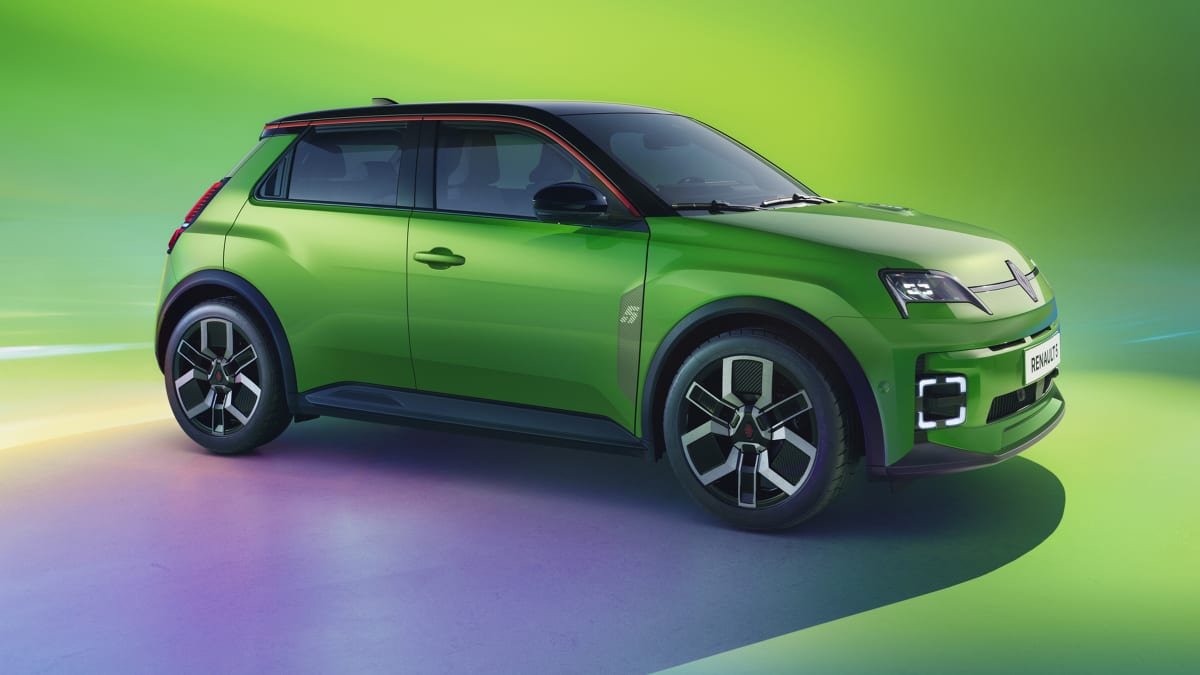Renault’s new retro-styled, budget-priced electric hatch may live for up to 15 years – a few months longer than the soon-to-be-replaced Toyota Prado.
Electric Cars
The 14-year life of the Toyota LandCruiser 200 Series V8 – and the near 15-year term for today’s Toyota Prado – could be beaten by a pint-sized electric car from French car maker Renault.
The new Renault 5 – a modern electric take on the original from 1972 – may be sold for up to 15 years in its current body shell with updates each year to keep it fresh, the boss of Renault has revealed.
It could make it one of, if not the oldest ‘new’ car on sale in Europe – where it is due to launch later this year – if it lives to 2039, and about double the usual seven-year life cycles of passenger cars.
The oldest ‘new’ car on sale in Australia is the 40-year-old Toyota LandCruiser 70 Series is not available there – followed by the Fiat Ducato/Peugeot Boxer vans, Mahindra Pik-Up ute, and the classic-styled Fiat 500 city car, all dating back to 2007.
The soon-to-be-replaced Toyota Prado (150 Series) will have been on sale in Australia from November 2009 to mid-2024, or close to 15 years.
“We’re not going to keep the 5 the same for seven years, but it’s an iconic product; so we don’t want to change the design,” Renault CEO Luca de Meo told UK magazine Auto Express.
“We can change a few colours, maybe. The structure of the thing will stay the same for a long time – maybe 10, 12, even 15 years – like [the petrol Fiat] 500 did. But you can change everything inside.”
It would live longer than the 12-year tenures enjoyed by the original two generations of Renault 5 – introduced in 1972 and 1984.
Renault executives told the British publication updates to the new city hatch will occur regularly, including one that may arrive before the first right-hand-drive UK deliveries in 2025.
Australian arrival timing is yet to be announced, but if it follows the larger Megane E-Tech – unveiled in late 2021 and introduced locally two and a half years later – the new Renault 5 may not be here until late 2026.
Renault 5 project lead Laurent Leprieur told Auto Express: “We plan to launch other colours already. For 2025 we’ll have two more colours, including one ‘pop’ colour [like the green and yellow of the launch versions].
“But over time, we’ll also work to improve the efficiency, the price – maybe a new battery technology. LFP chemistry is one thing we could look for there, as an example.”
LFP – or lithium ferro (iron) phosphate – batteries are used in many Tesla, BYD and MG vehicles, and are cheaper to build but less energy dense than the nickel-manganese-cobalt batteries planned for the Renault 5 at launch.
“We plan to launch [the first update] just a few months after the start of the sale, a one-pedal offering,” Mr Leprieur told Auto Express.
“It will have four regen[erative] braking levels and then the fifth one will be full stop, ‘single-pedal’ mode. We have in mind to see how we can propose this system for customers who buy the first version without it, because it’s mainly hardware.”
Auto Express reports the regenerative braking levels will be controlled using paddles on the back of the steering wheel, similar to Hyundai and Kia electric cars – as well as many petrol and diesel cars, in which the paddles change gears.
The Renault 5 is due to launch in Europe priced from €25,000 ($AU41,000) – as one of Europe’s most affordable electric cars – but the global boss of Renault says it may become even cheaper thanks to learnings from the even-smaller and cheaper electric Twingo due in 2026.
“As we go along, if I find out I need one semiconductor instead of two, or one chip instead of two, I’m going to take it out,” Mr de Meo told the UK outlet.
“All the things that we learn on the Twingo, we will roll back into 5 and 4 [an electric SUV revival of the 1960s Renault 4].
“So you can expect 5 and 4 to come down in price. We’ve already learned things [from the Twingo project] that are relevant not just for the 5, but also for the other platform – so Megane, Scenic and so forth.”
Among the measures taken to keep the Renault 5’s price low are the use of the Renault Captur SUV and Clio hatch’s front suspension, and compact, multi-link independent rear suspension adapted from the Dacia Duster budget-priced SUV.
Cars of the Renault 5’s size – including the Ford Fiesta ST and Hyundai i20 N hot hatchbacks – typically use cheaper, non-independent ‘torsion beam’ rear suspension, but Auto Express says it would have required changes to the car’s dimensions to fit the larger of its two battery packs.
Electric Cars Guide








